Origin: Lehigh County, PA
Maker: Tentatively (by me) a member of the Hess family. I base this on info provided in the articles in the KRA compilation book, pages 347 to 354. Details include the stock profile, triggerguard, patchbox, toeplate, ramrod pipes and barrel tang. These are all included in the photographs.
Physical data:
Overall length: 57 1/2"
Barrel, slightly swamped, approx .41 cal
Length: 41 7/8"
Dia @ breech: 1.015"
Dia @ muzzle: .892"
Narrowest at 9", from muzzle, dia: .878"
Length of pull: 13"
Buttplate: 1.43" wide (including patchbox door) X 4 1/2" long, return is 2 1/2" long
Patchbox dimensions: 5.29" long X 1.03" wide
Triggerguard: 6 5/8" long, bow is 3/4" wide
Nosecap: open ended, 1.28" long
Lock: Percussion, converted from flint, marked Peter Newhard, 4.72" X .91"
My observations:
This appears to be a fairly plain rifle. No engraving (to include no name or initials visible on barrel) except on the lock. Nice curly maple. Carving limited to incised line for molding down the center of the forearm, and molding on cheekpiece. No sideplate, but two brass escutcheons for the lock screws.
The bore appears to be smooth at the muzzle. I've run a tight fitting brass borebrush down the bore to see if I can detect any twist - it seems that there might be, but I get anywhere from a 1:37" to a 1:48" twist. I haven't gotten the same measurement twice. I'm wondering if it is somehow just the action of the twist on the brush that is causing the twist. Any suggestions on a better way" I can't get a light to shine down the bore far enough to detect anything.
The barrel has very distinct grind marks across the flats on the bottom three flats. I assume from the manufacturing process. The KRA article mentions large grindestones used at the Hess factory. The barrel appears to be original length based on the remains of the cirular scribed marks on the muzzle and no apparent movement of tennons. It appears to have been finished in the bright, but has obviously browned with age and patination. The rear sight is on backwards, which while not common, is not unheard of on original rifles.The barrel tang looks like those pictured in the KRA articles. There are no detectable initials or names, but the top flat between the breech and rear sight looks like it may have been filed at some time. The barrel is held to the stock with four pins and the tang screw.
When I acquired it, it had an iron ramrod. I have kept the ramrod, but made a wooden one to replace it for display.
The triggerguard and buttplate both have a decidedly copperish cast to them, but they match each other. At first, I thought it was old varnish, but the sheetmetal (patchbox, toeplate, nosecap, ramrod pipes) all have a normal brass appearance even though some of the parts have varnish on them.
The lock has been converted to percussion, or perhaps was built as percussion using an unused flint lockplate. It has the holes for the frizzen screw and spring that have been filled. The lockplate is marked Peter Newhard, who I believe died circa 1813, but the internals are the stirrup type with no half cock notch.
I have several questions on the gun. In the opinion of the experts, it this a Hess? Any thoughts on which one and when? The stock appears to have relief cuts for a flint hammer, but I don't know enough about the Hess guns to know whether the rest of the gun would indicate a later manufacture. The lock is interesting in that it is marked Newhard - did he provide locks to the Hess manufactory? He was in the same general area. Another interesting point is what appears to be a series of dots outlining the lock. My first thought was a patch job held in with pins or nails. Not the kind of work that one would expect from a "restoration", but perhaps something in the working lifetime of the gun? I have some thoughts on this that I'd be willing to discuss, but it's all speculation, and I'd rather here what those more knowledgable think before I make an idiot out of myself! Did the Hess manufactory, at some time in it's life, do something akin to assembleyline conversion from flintlock to percussion? ONce I send this, I'll probably think of something else I should have included.
Please feel free to contact me with any questions, or any additional insights or info on this gun. Other than the area around the lock that I noted above, the only apparent repair is where the forearm had separated cleanly across the curl at the second barrel pin, located between the entry and middle pipe, and was glued back together. It has an old coat of varnish that covers much of the sheetmetal, but I'm not sure just how old it is - maybe the 1950s?
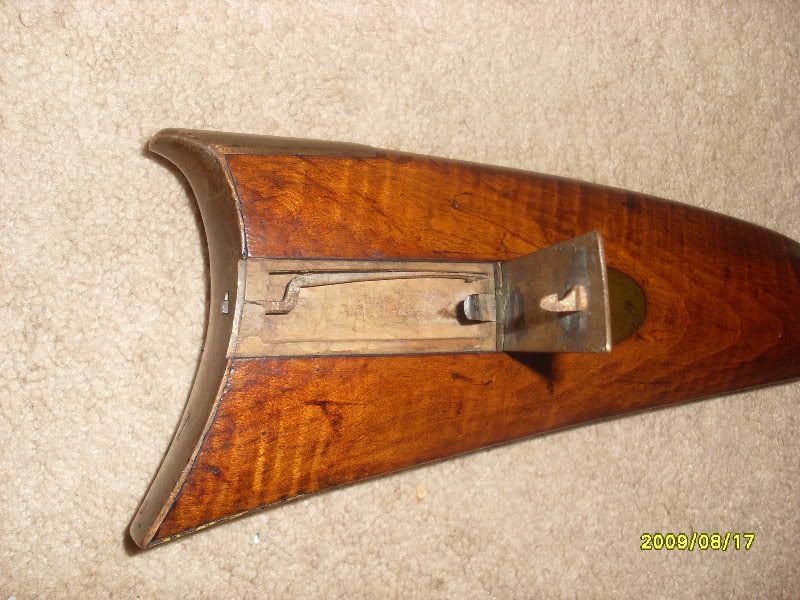
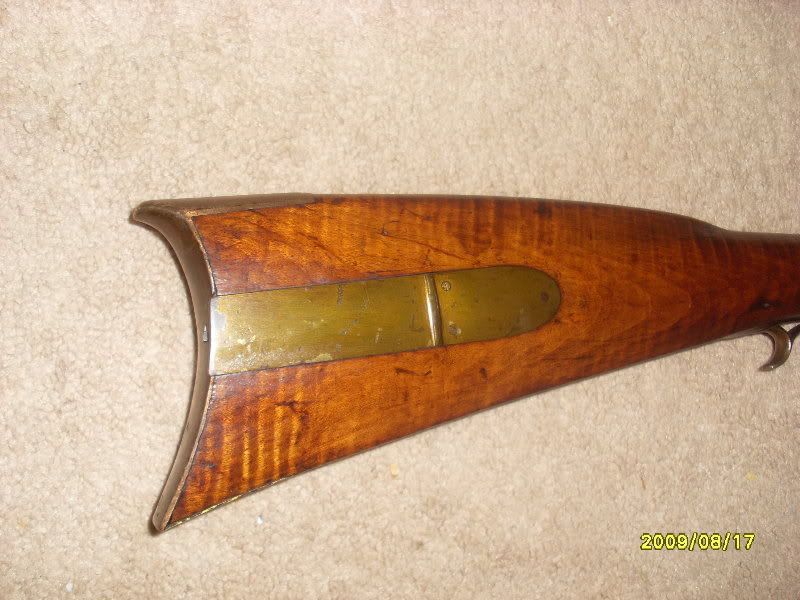

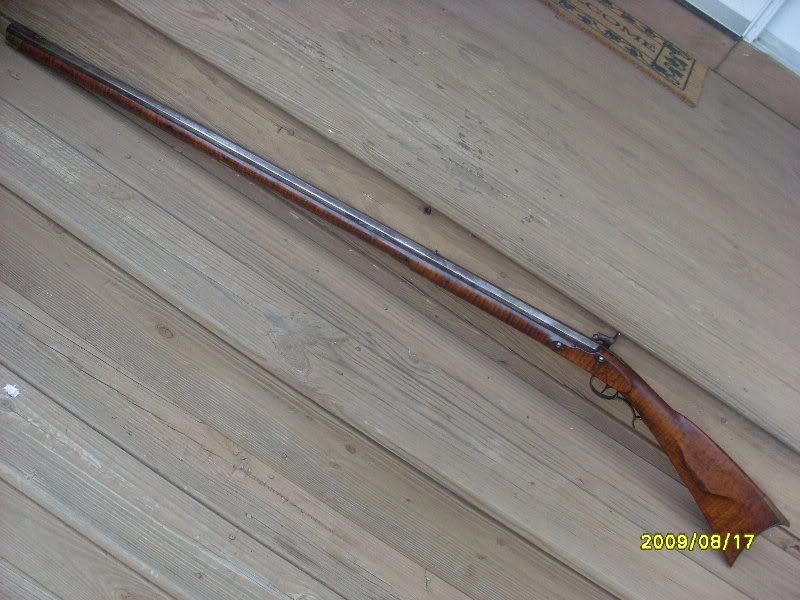
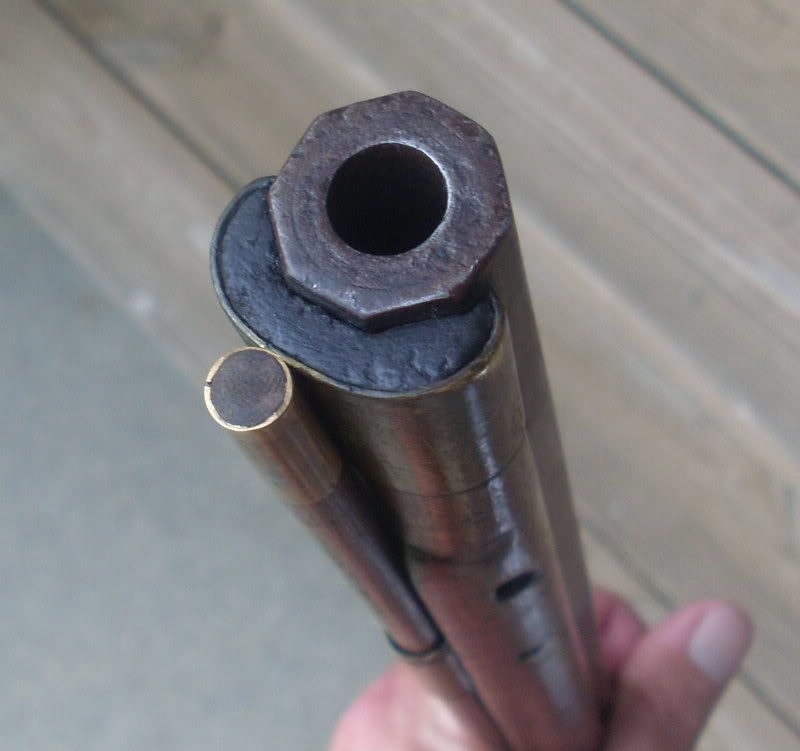
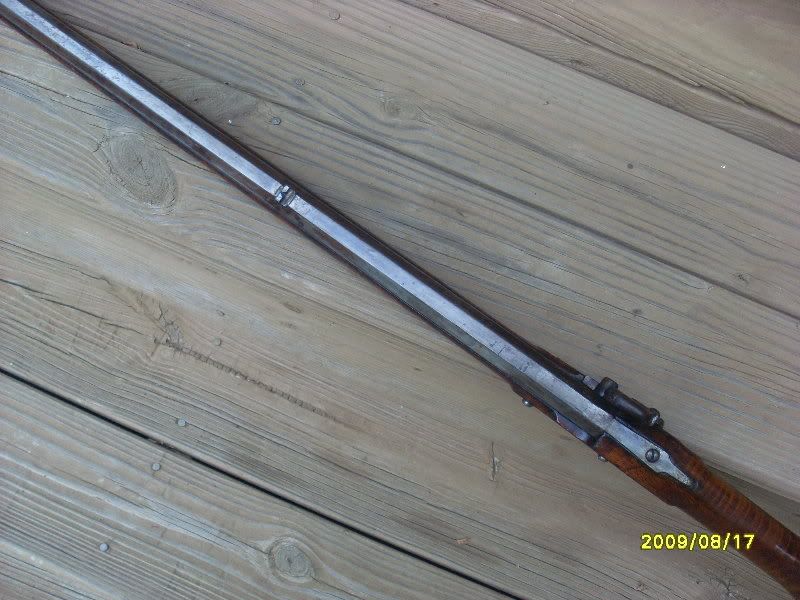
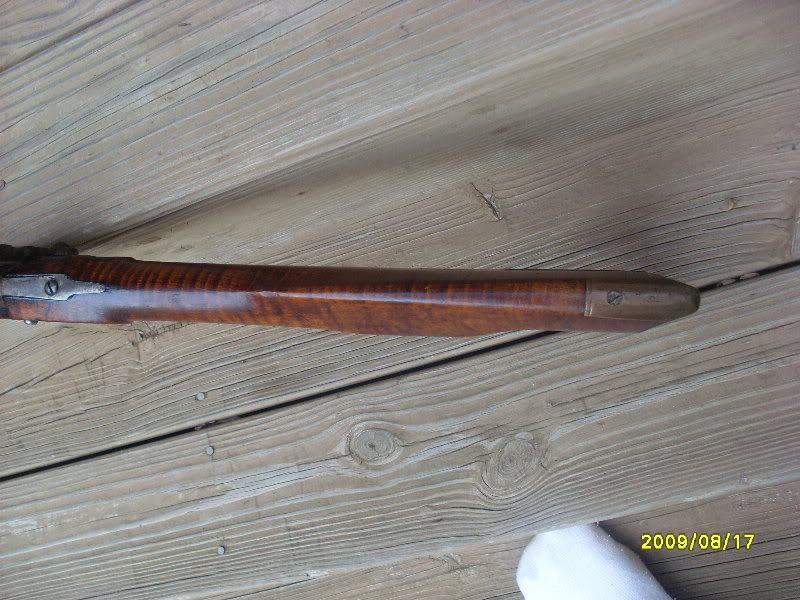
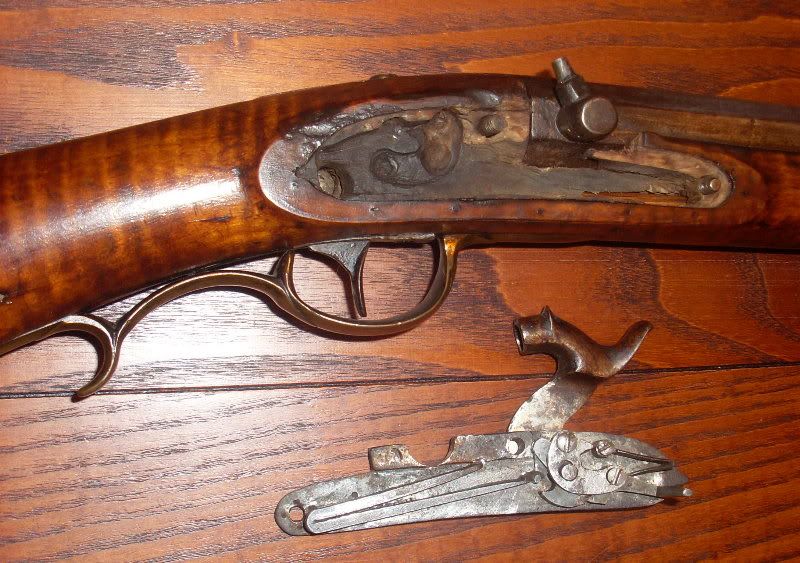
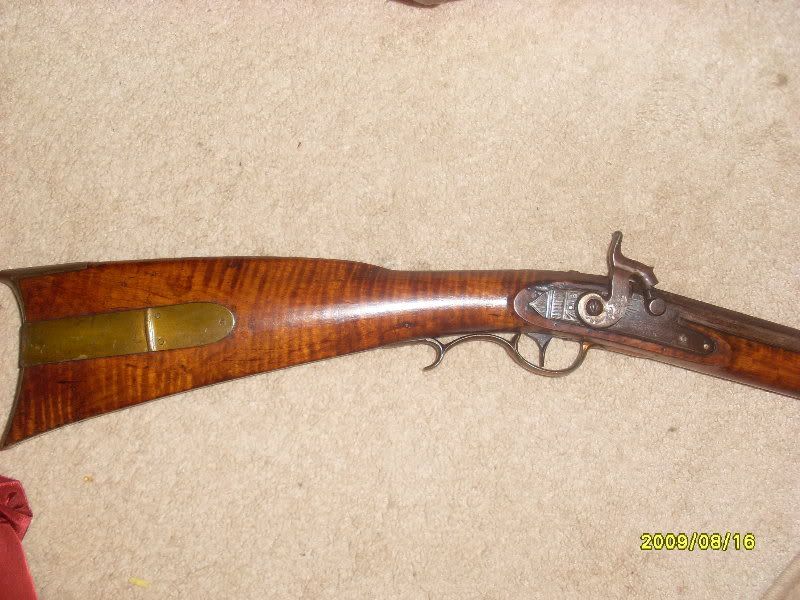

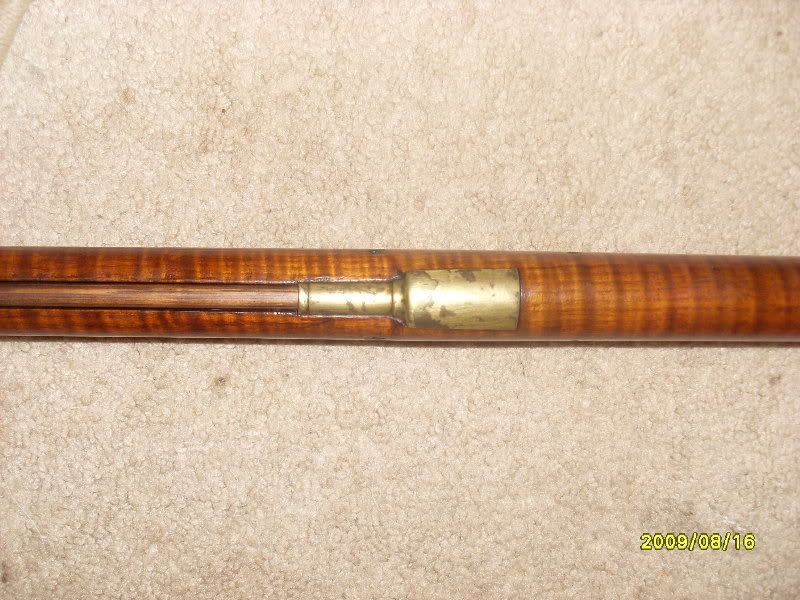

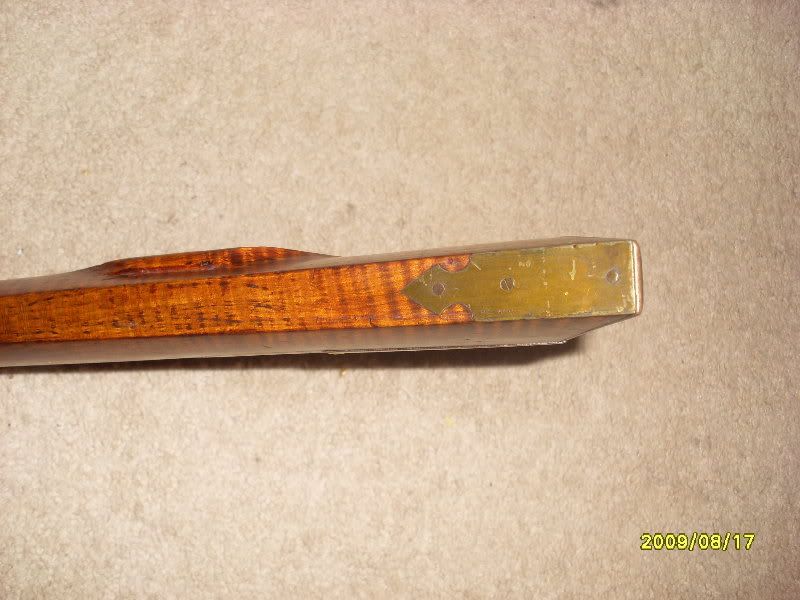
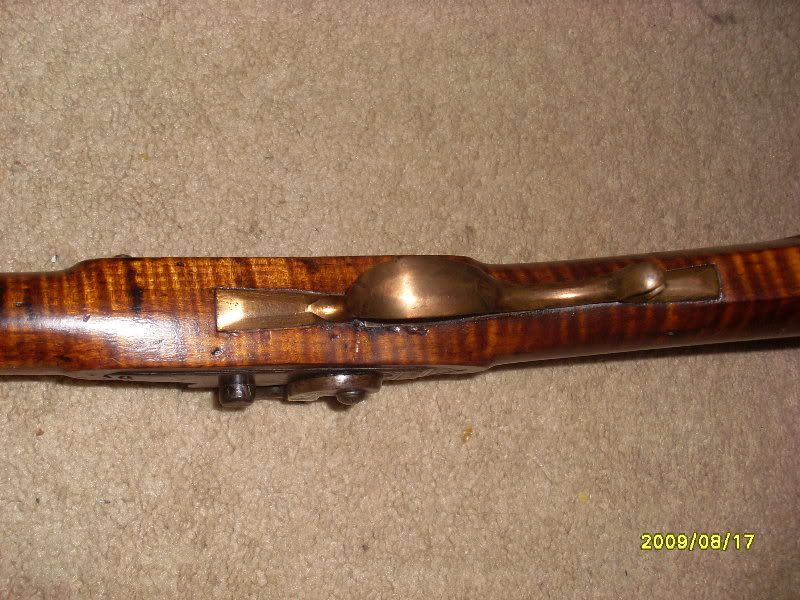
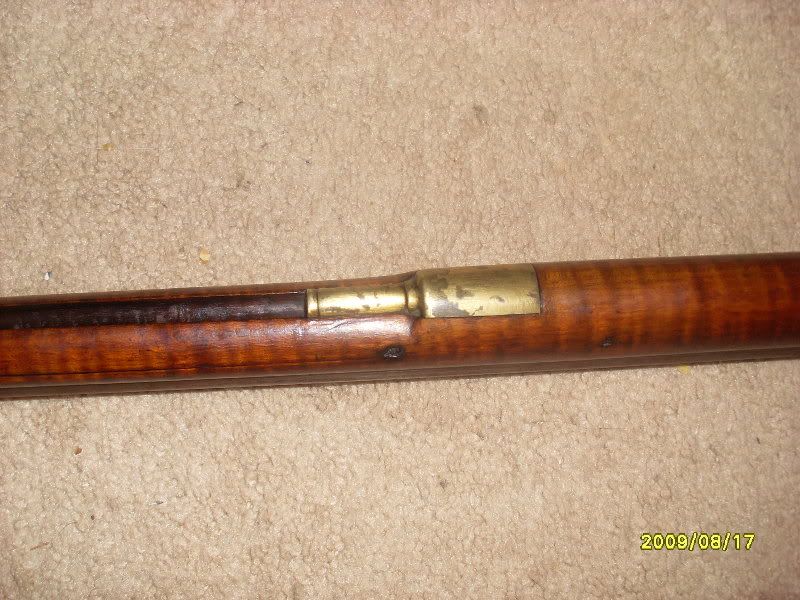
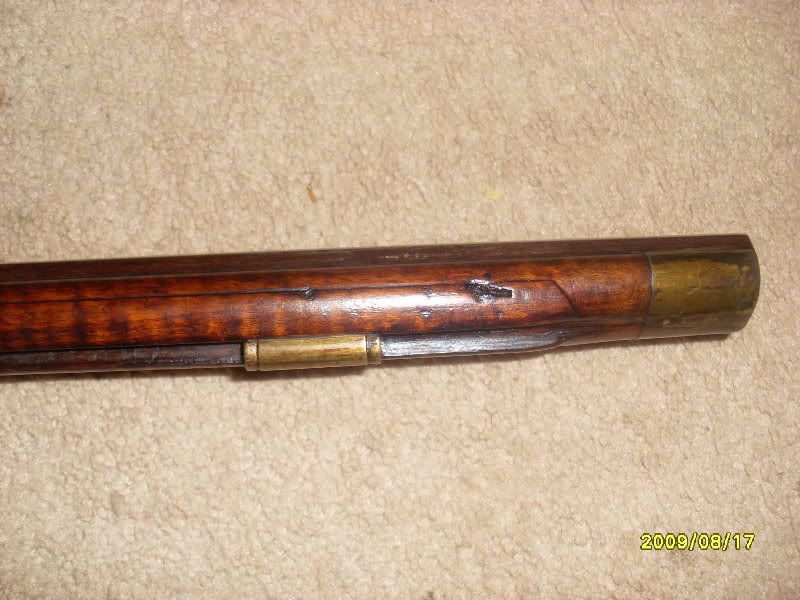
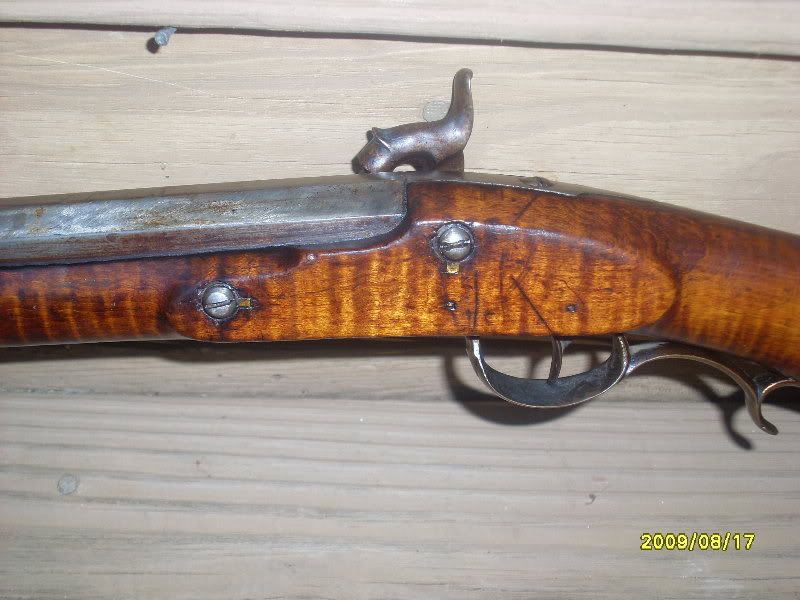
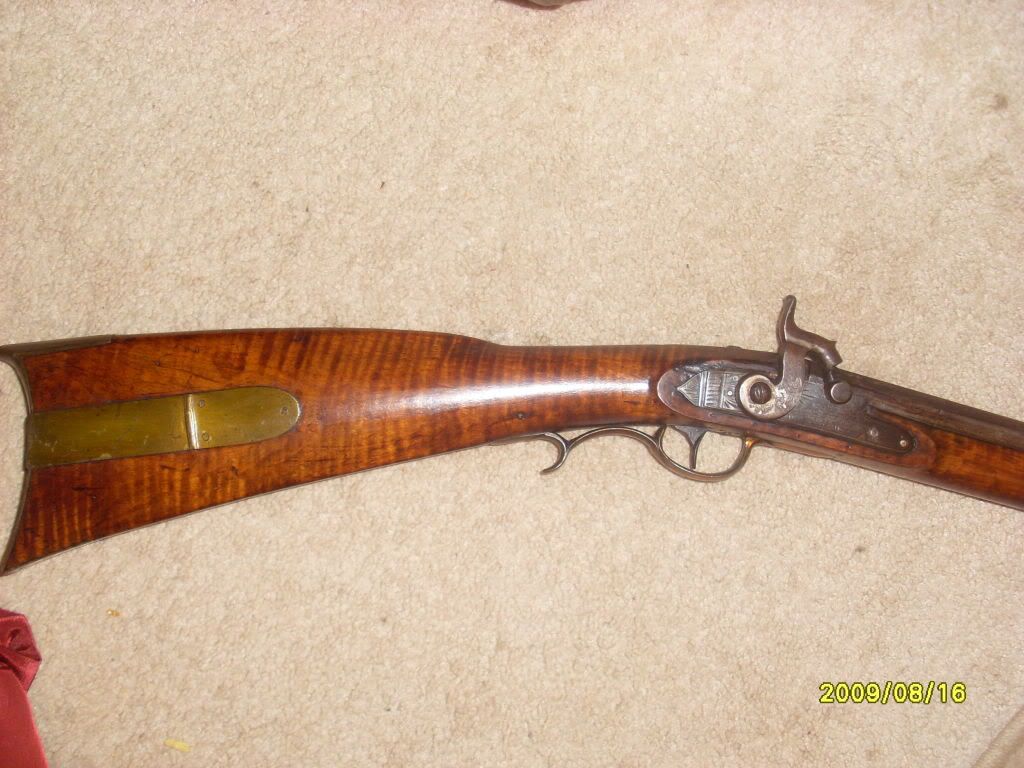
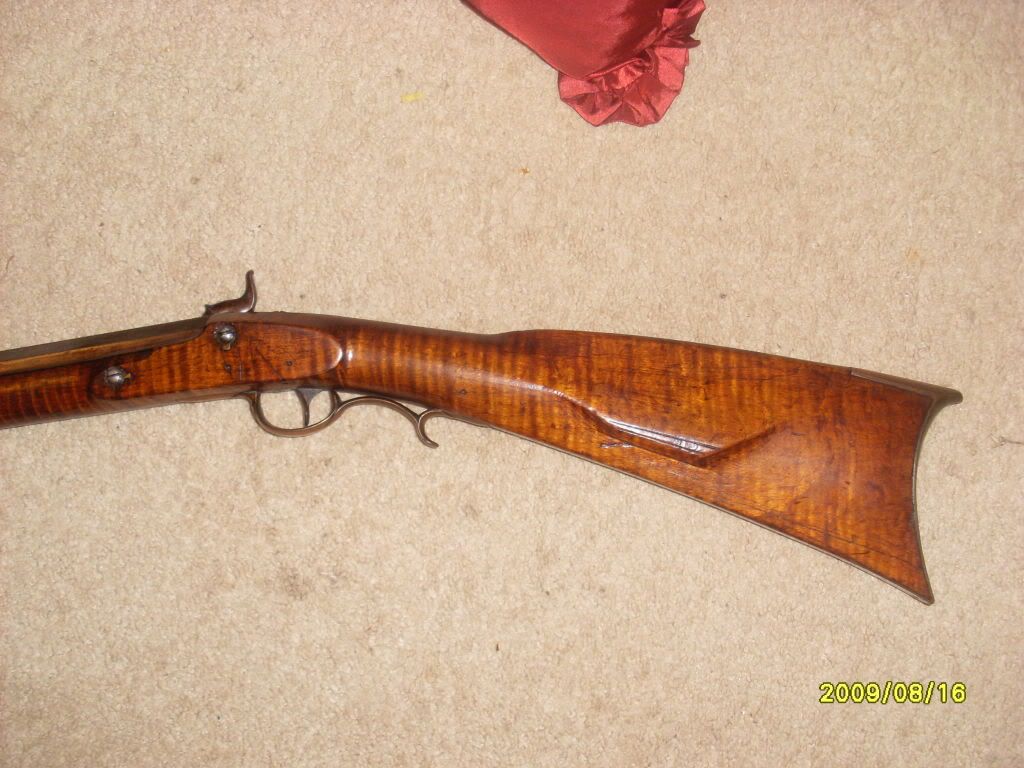

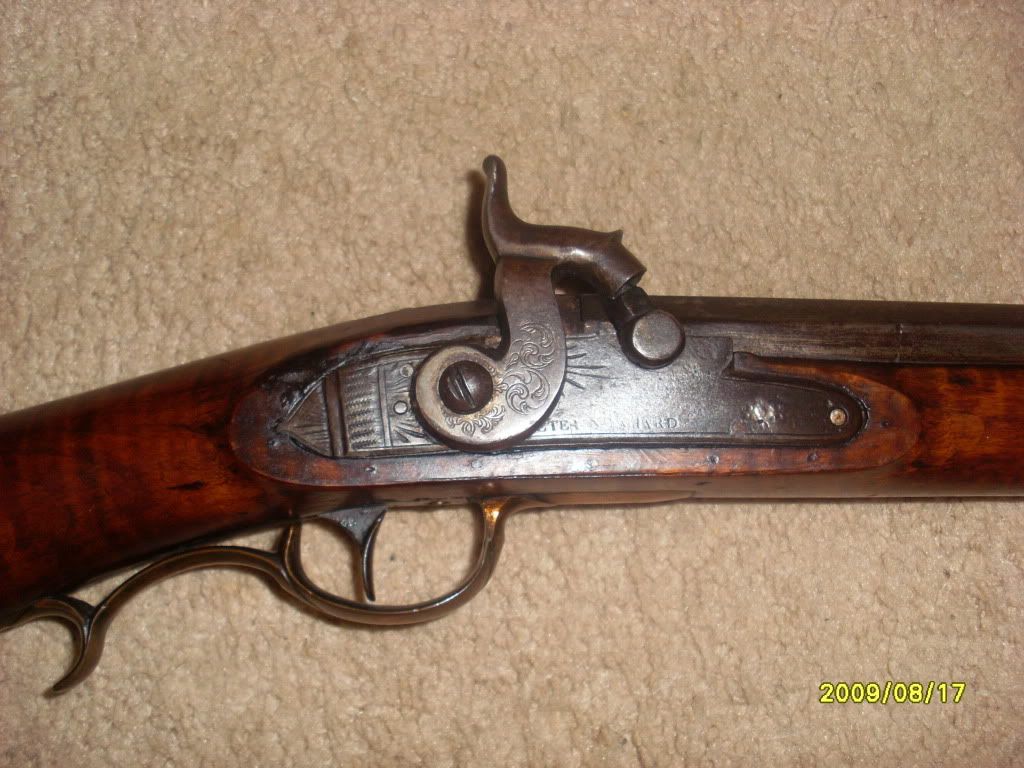

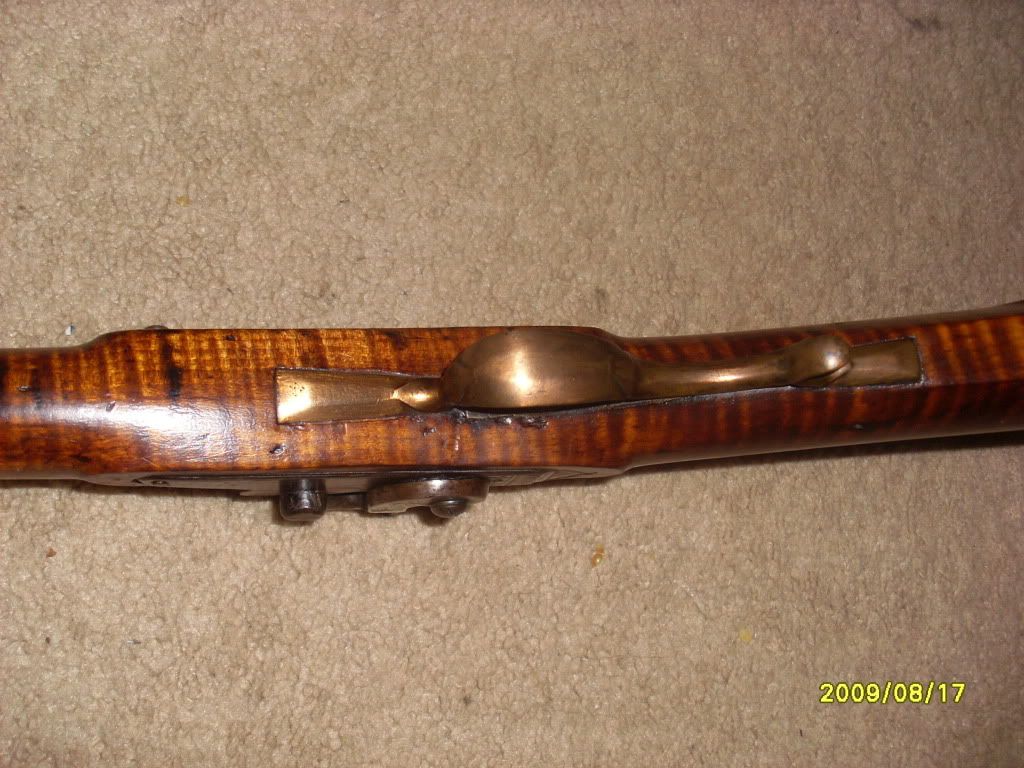
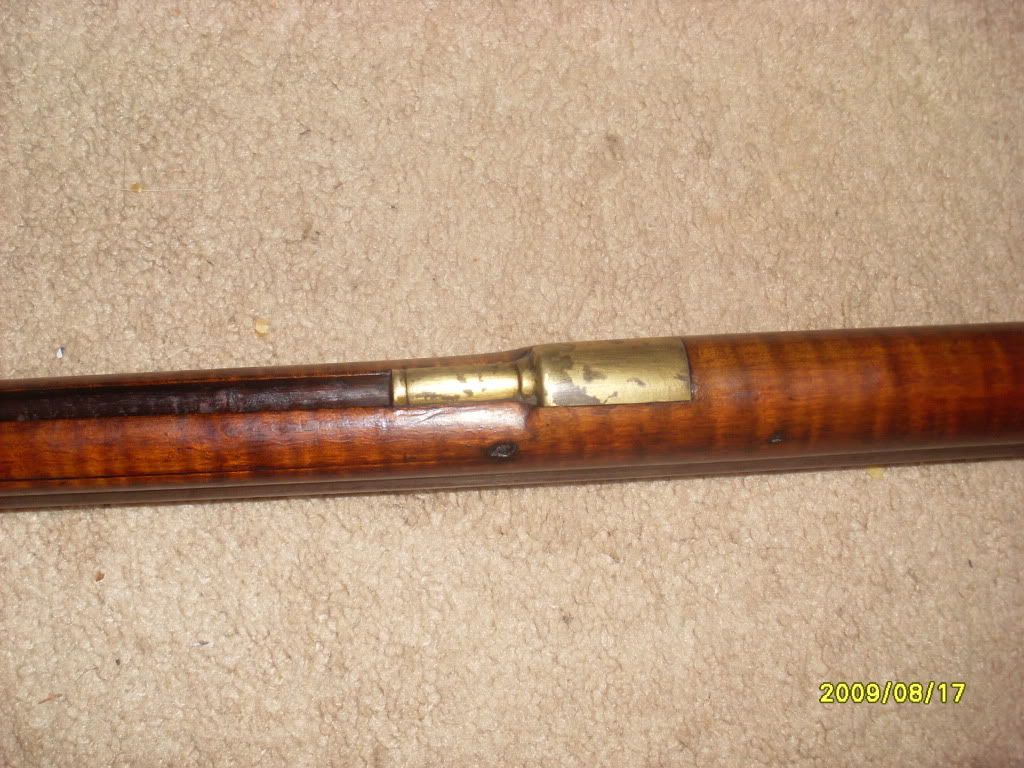
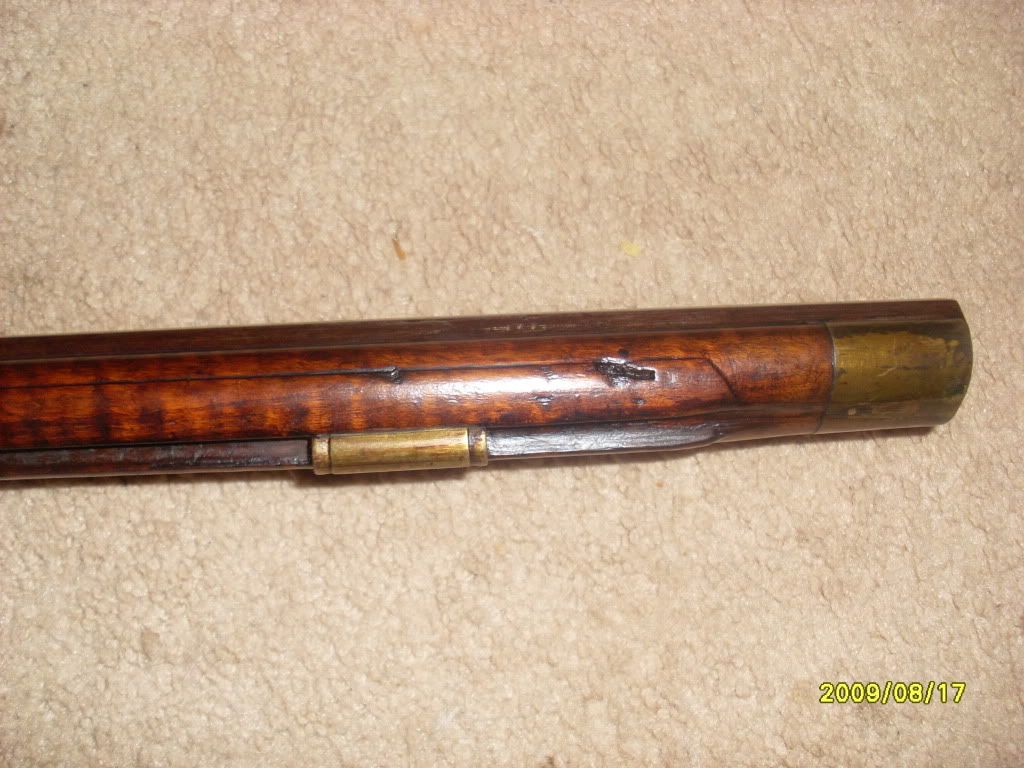
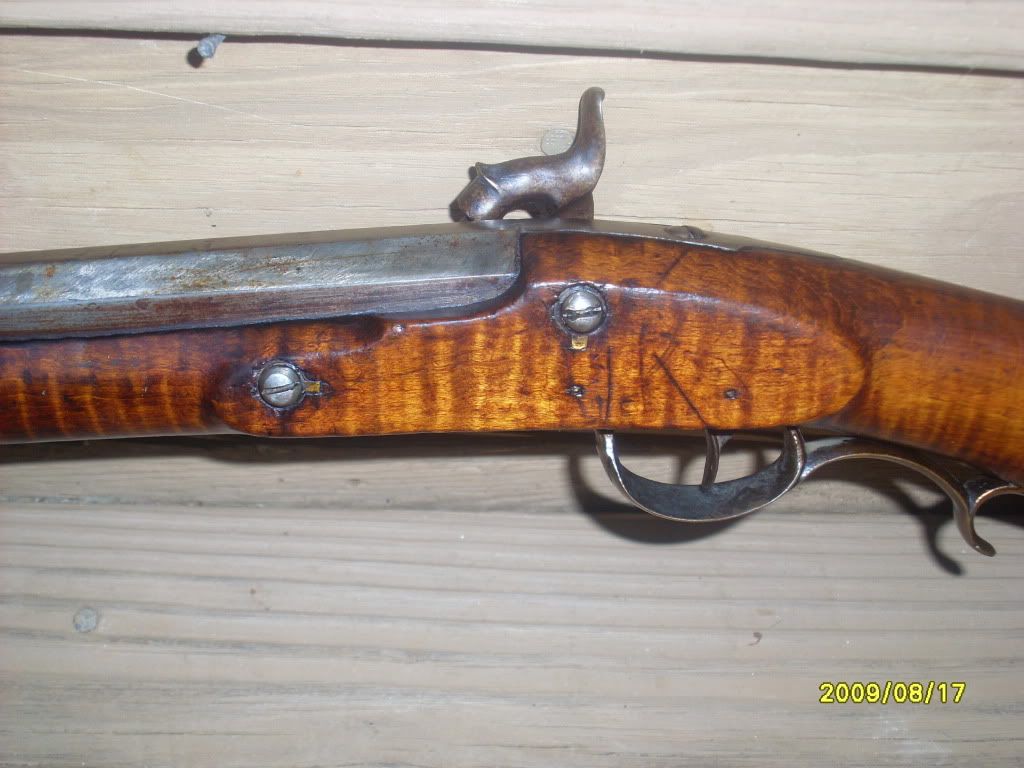
Photos Added 8-25-09

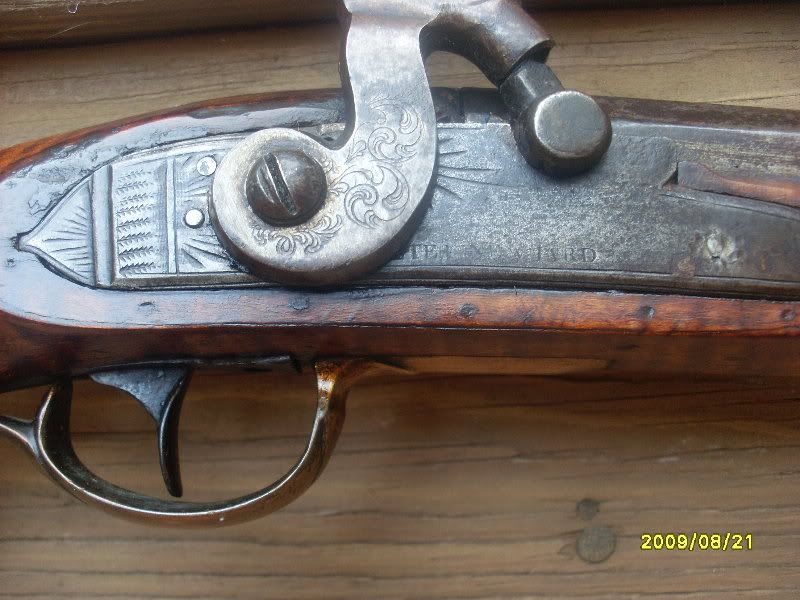
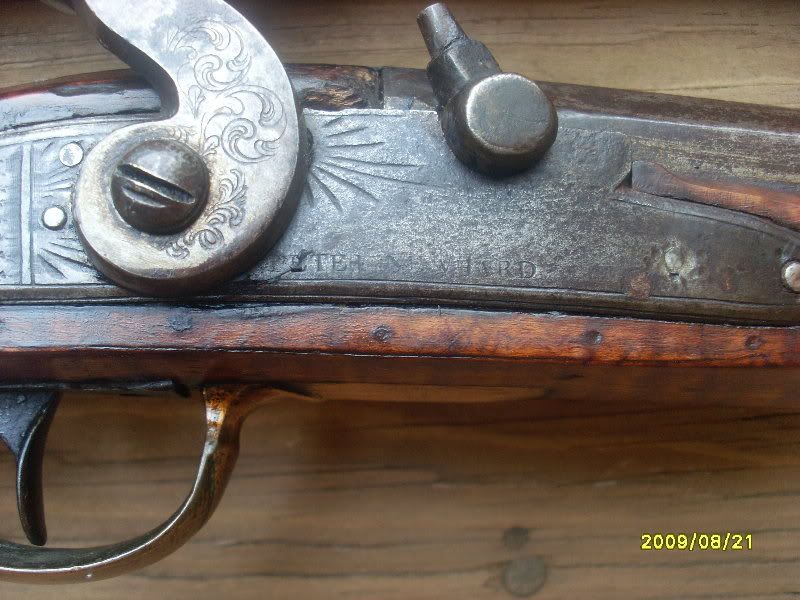
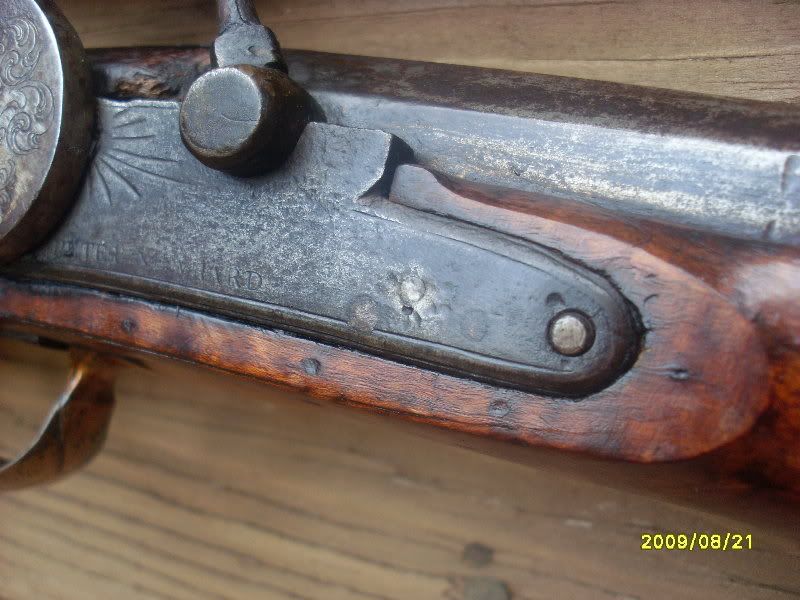
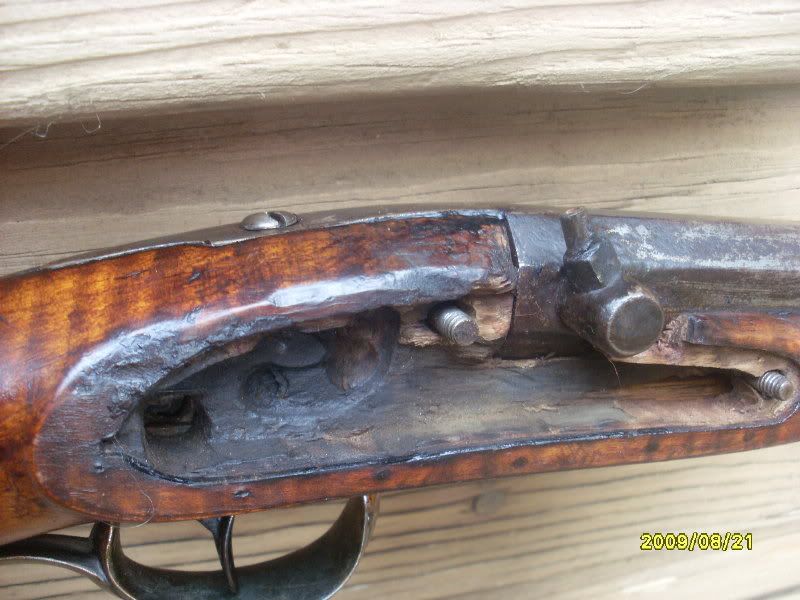
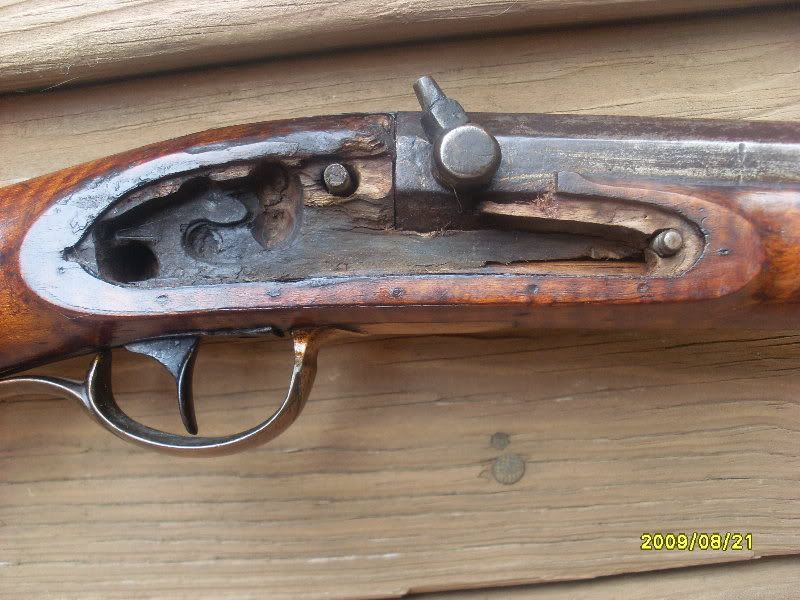
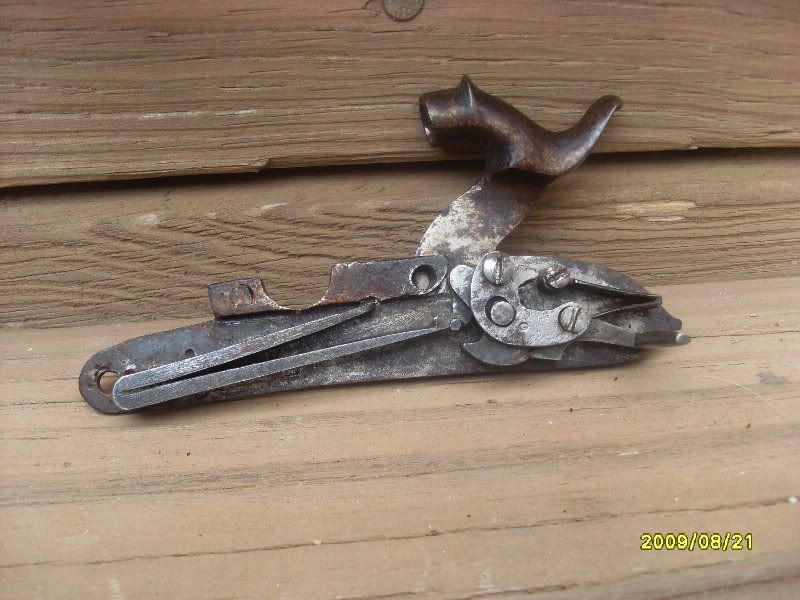
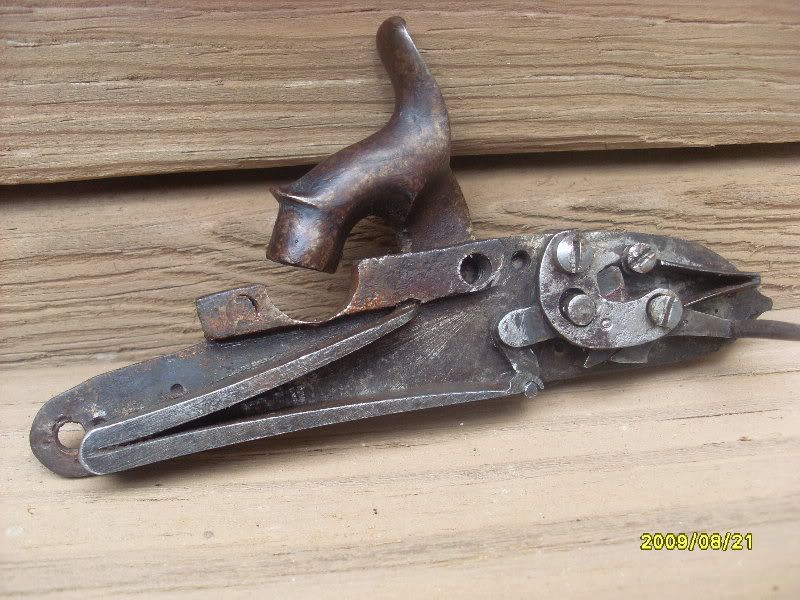
Comments:
Certainly looks Hess-ian to me. It possesses all of the traits that a good Hess rifle has. The architecture is very pleasing and the wood is good striped maple. It appears to have been a flint gun once upon a time and the conversion was well done.
-----------------------------------------------------------------------------------------------
The source for info on this gun is Tim Lubenesky, President of the KRA. He knows the Hess family from start to finish and can vet this gun better than anyone. I Think, however, this gun has always been percussion.

